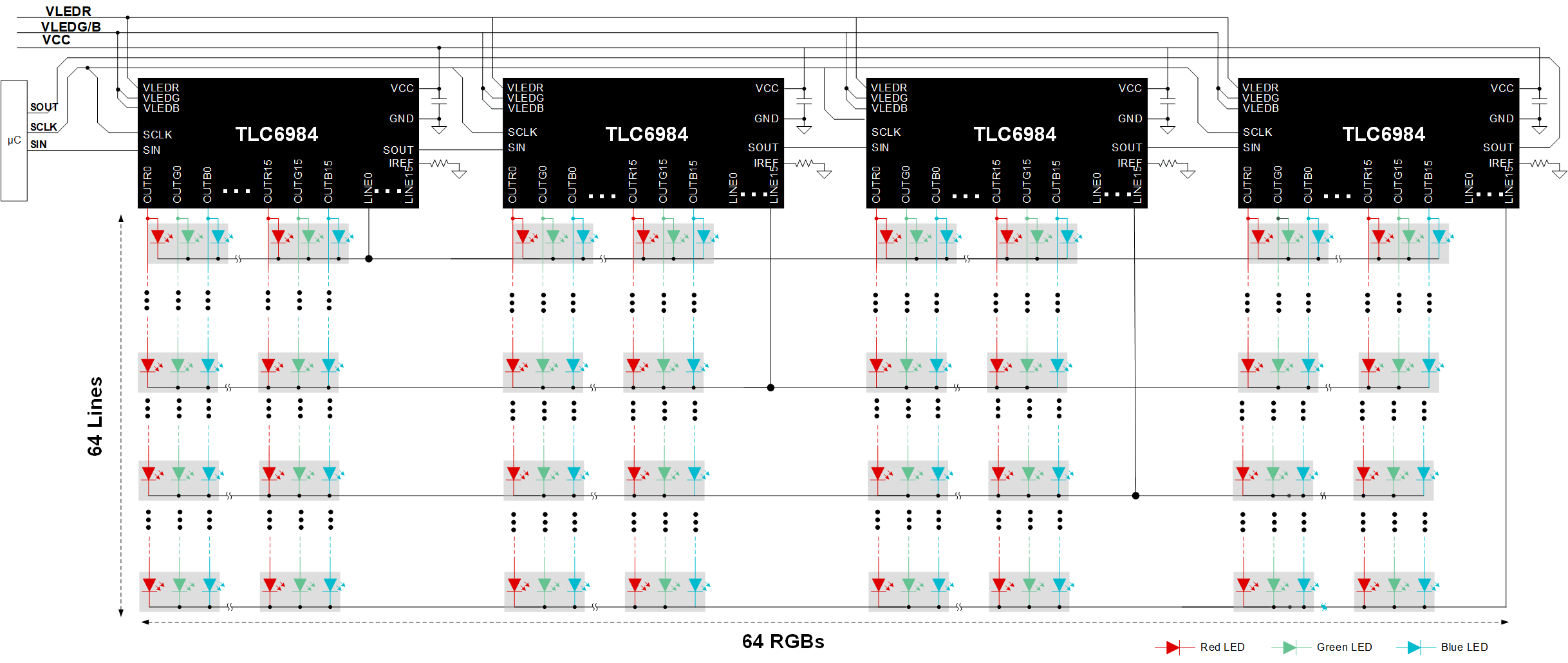SLVSG10D November 2021 – July 2022 TLC6984
PRODUCTION DATA
- 1 Features
- 2 Applications
- 3 Description
- 4 Revision History
- 5 Description (continued)
- 6 Pin Configuration and Functions
- 7 Specifications
-
8 Detailed Description
- 8.1 Overview
- 8.2 Functional Block Diagram
- 8.3
Feature Description
- 8.3.1 Independent and Stackable Mode
- 8.3.2 Current Setting
- 8.3.3 Frequency Multiplier
- 8.3.4 Line Transitioning Sequence
- 8.3.5 Protections and Diagnostics
- 8.4 Device Functional Modes
- 8.5 Continuous Clock Series Interface
- 8.6 PWM Grayscale Control
- 8.7 Register Maps
- 9 Application and Implementation
- 10Power Supply Recommendations
- 11Layout
- 12Device and Documentation Support
- 13Mechanical, Packaging, and Orderable Information
Package Options
Mechanical Data (Package|Pins)
Thermal pad, mechanical data (Package|Pins)
Orderable Information
3 Description
With the pixel density getting higher in narrow pixel pitch LED display or mini and micro-LED products, there are urgent demands for LED drivers to address those critical challenges. These challenges include ultra high integration to meet the strict board space limitation, ultra low power to minimize the system level power dissipation, new interface to enable high data refresh rate with low EMI impact, and excellent display performance to serve the growing needs of higher display quality.
Device Information
| PART NUMBER | PACKAGE(1) | BODY SIZE (NOM) |
|---|---|---|
| TLC6984 | VQFN (76) | 9.00 mm × 9.00 mm |
| BGA (96) | 6.00 mm × 6.00 mm |
(1) For all available packages, see the orderable addendum at the end of the data sheet.
 TLC6984 with Four Devices Stackable Connection
TLC6984 with Four Devices Stackable Connection